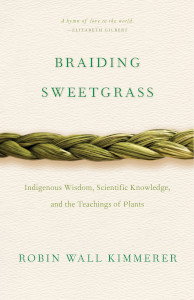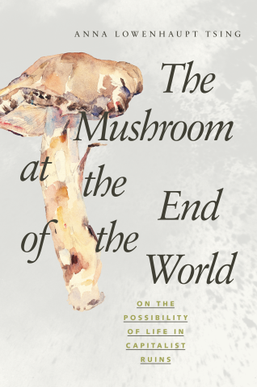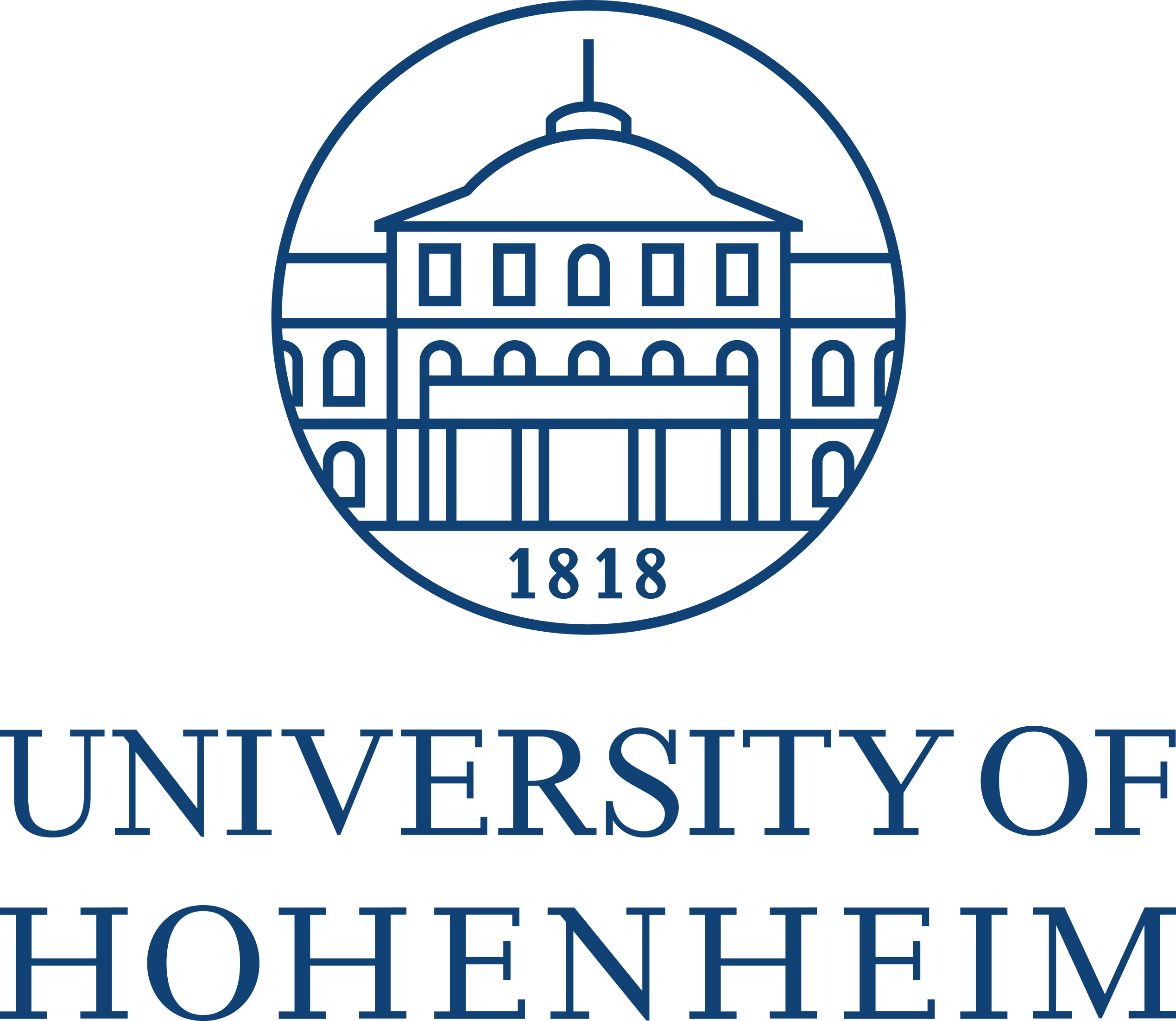The scientific method
Motivation: Philosophical Foundations of the Scientific Method
In early November 2024, Donald Trump was elected for a second term as President of the United States. Shortly after his election, he began assembling his cabinet. Among the appointees were some highly controversial figures, including Robert F. Kennedy, a grandson of former U.S. President John F. Kennedy. Kennedy was nominated as the new Secretary of Health despite his widely disputed views on the causes and management of the COVID-19 pandemic, as well as his vaccine skepticism1.
In Figure 1 several members of Trump’s likely future cabinet including R. F. Kennedy at the bottom right can be seen eating fast food on an airplane. These men share a common background: they were all educated at the most prestigious universities in the United States—among the best in the world—and should therefore have a fundamental understanding of and respect for scientific facts, the scientific method and their implications for society. Yet, they openly disregard healthy eating, question critical medical research outcomes like vaccines, and are known for denying human-caused climate change.

This observation prompts us to reflect on the success of modern science—particularly how the scientific method operates—and why, despite its remarkable achievements (such as combating diseases through vaccination as shown in Figure 2), it remains subject to significant criticism and skepticism, even regarding fundamental insights like the importance of healthy nutrition.


One way to understand and learn about the strengths and usefulness of the modern scientific method is to study its critics, such as the individuals depicted in the above image. For such an endeavour, guiding questions could be:
- What do we gain by adhering to the scientific method?
- Why isn’t the scientific method so universally compelling that it convinces everyone, even those from the wealthy and educated elite?
- Finally, what strategies are employed to discredit modern scientific research in pursuit of alternative goals, such as accumulating wealth or gaining societal power?
Much has been written about such strategies. A significant contribution comes from the essay “On Bullshit” Wikipedia by the philosopher Harry G. Frankfurt, who taught at the same institutions where many of these individuals studied (e.g. the Universities of Cornell, Oxford, Yale and Princeton). Additionally, the idea of “half-truths,” as opposed to outright lies, is often used to distort the outcomes and implications of scientific research.
By understanding these strategies, one can sharpen their own critical thinking—assuming adherence to the principles of the modern scientific method—and also develop counter-strategies. This understanding may even lead to improvements in the scientific method, making it more effective and persuasive.
Another key issue in discussions about the scientific method is the recognition that the modern lifestyle in the Western world is unsustainable. This lifestyle is rooted in extraordinary scientific advancements, such as the invention of the combustion engine and modern agricultural practices that deliver high and stable yields. However, it is also evident that these developments come with steep costs and unintended consequences, including the destruction of natural ecosystems caused by modern agriculture and the destabilization of Earth’s climate due to greenhouse gas emissions, primarily from machinery.
This duality has led to movements over the years that critize modern scientific approaches (and capitalism as a prerequisite of it) as enabler of such a lifestyle in favor of more traditional ways of engaging with nature, knowledge, and sustainable living. These alternative approaches, particularly when practiced by indigenous communities, are often referred to as traditional knowledge (See a definition on Wikipedia). They represent a different perspective on understanding and interacting with the natural world.
For example, the North American indigenous author Robin Wall Kimmerer explores these themes in her bestselling book Braiding Sweetgrass (Wikipedia). A trained botanist, Kimmerer contrasts traditional knowledge with modern scientific methods, examining their similarities and differences. Her work highlights how traditional approaches can coexist with and complement modern science.


Similarly, the anthropologist Anna Lowenhaupt Tsing, who teaches at the University of California, Santa Cruz, presents an alternative vision in her book The Mushroom at the End of the World (Wikipedia). Tsing discusses the sustainable use of a valuable resource—the Matsutake mushroom—within a modern, post-capitalist system. She explores how this resource can be utilized in ways that preserve biodiversity, remain accessible to many, and avoid exploitation, while simultaneously being integrated into the natural environment.
Building on these reflections, we will discuss the essence of the scientific method, as developed during the Middle Ages and later refined during the European Enlightenment. We will explore what makes it so effective, the advantages it offers in advancing our understanding of nature, and how these insights can be applied to improve our lives, for instance, through the cultivation and utilization of crops.
Even though the modern scientific method, shaped by the historical conditions of Western Europe and its philosophical traditions (alongside capitalism and colonialism), has become a dominant worldview, it remains highly attractive to many people and societies because of its numerous advantages.
Learning goals
- Understand the key components of the scientific method as developed in the Western world since the medieval ages.
- Grasp the fundamental philosophical concepts underpinning the scientific method, including rationality, truth, objectivity, and realism.
- Be able to explain why these four concepts are beneficial, desirable, and useful outcomes of the scientific method.
Philosophical foundations
Philosophy itself is the basis of the scientific method and the scientific disciplines that apply the scientific method (Figure Figure 4).

These foundations justify why it is necessary, important and helpful to investigate the philosophical aspects of science.
The elementary scientific method
Based on the review of the historical developments in the philosophy of science, we can derive the key principles of what is called the scientific method. It is now the cornerstone of scientific inquiry, comprising a systematic approach to discovering and expanding our understanding of the natural world and natural phenomena. This method is characterized by specific, critical steps and ensures that scientific exploration remains both rigorous and reliable.
We can summarize the key principles of the scientific method in the following based on the philosophical arguments.
At the outset, the process begins with the formulation of a hypothesis. This step involves generating a testable and falsifiable statement or prediction based on existing knowledge or observations. The hypothesis serves as a foundational element, guiding the direction of the research.
Following hypothesis formulation, the scientific method proceeds to hypothesis testing. This step involves conducting experiments or observations to gather data relevant to the hypothesis. The outcome of these tests will either support or refute the initial hypothesis, contributing to a more nuanced understanding of the subject matter.
Integral to the scientific method is the use of both deductive and inductive logic in an interative manner. Deductive logic allows scientists to apply general principles to predict specific outcomes, while inductive logic aids in developing hypotheses and interpreting complex data. This combination of deduction and induction ensures a comprehensive and rigid scientific process.
Controlled experiments, along with replication and repeatability, are also central to the scientific method. Controlled experiments are designed to isolate and test specific variables and factors, minimizing external influences that could bias results. Replication and repeatability of experiments are crucial for verifying results and ensuring their reliability. This aspect underscores the self-correcting nature of science, where findings are continuously scrutinized and validated by the scientific community.
The interaction between data and theory is another defining characteristic of the scientific method and is guided by methodological, technical and mathematical developments. Data collected through experimentation informs and refines existing theories, while theoretical frameworks guide the interpretation of data. This dynamic interplay between theory and empirical evidence is fundamental to the advancement of scientific knowledge and complementary to a deductive-inductive process
Lastly, the scientific method acknowledges the limits to the domain of scientific inquiry. It recognizes that science is confined to empirical, observable phenomena and that its methods are not suited to answering every type of question or solving all problems. This acknowledgment of limitations ensures that scientific inquiry remains focused and grounded in what can be empirically tested and observed.
In summary, the scientific method is a disciplined, logical approach that underpins scientific research. By adhering to these principles, the scientific method makes several promises that differentiates it from esoteric explanations and other, e.g., religious systems for making sense of the world that we humans encounter. It also provides a common basis for /different disciplines/ of scientific investigation and ensures the applicability of scientific results for technological development as outlined in Figure 4.
In the following, we discuss promises of the scientific method on an conceptual, philosophical level. In later chapters, we derive more concrete principles, approaches and specific tools for implementing the scientific method in the process of scientific working.
Four claims of the scientific method
A proponent of the scientific method, one may claim that it has several merits, which are referred to when people say that something is scientific. Scientists make four claims when they make a scientific statement such as Table salt is composed of sodium and chlorine. The claims are rationality, truth, objectivity and realism. These are very strong claims, and contribute to the trust and positive image that scientists (frequently, but not always) experience.
Each of the four terms define important concepts that have a deep philosophical meaning and are not easy to define. However, science aims to make statements about the physical world. For this reason, operational definitions are derived from conceptual definitions is sought in the following discussion to be able to make statements about the physical world.
Operational and conceptual definitions of truth must be kept separated for another reason. The conceptual definition of truth plays the important role of making scientific hypotheses meaningful even before an operational definition or method leads to the collection of data and the drawing of conclusions. The following descriptions of the four terms are philosophical discussions of the four terms.
Rationality
Rationality is closely linked with the terms rationale and reason 2. In philosophy, rationality is defined as good reasoning and it has two functions: Regulating belief and guiding action. A rationale is an action resulting from rational beliefs, which are themselves supported by appropriate evidence obtained by systematically gathered observations.
In the fields of economics, social and political science, rationality has a different meaning: If an individual or a group of individuals act optimally with respect to their interests or goals, whatever they may be, their behaviour is called rational. Thus, rational behaviour implies some kind of selfishness that may involved ‘irrational’ behaviour.
Think about a tobacco company that sells cigarettes that are unhealthy for smokers but increase the profit of the company. The company acts rational in the sense that selfishly because there is a market for cigarettes caused by the demand of people, even though research conducted according to the scientific method (i.e., supported by systematic longitudinal studies on the life expectancy of smokers vs. non-smokers) showed that smoking causes cancer.
An extreme philosophical view of rationality states that a good rationale has to be free from emotions, personal feelings or any kind of instincts. Under this assumption, a rationale may be considered highly objective, logical and almost mechanical. Its opposite is irrationality or passion, which is influenced by personal prejudices and emotion, cultural habits and moral codes and therefore contains some form of subjective bias.
In theoretical models, particularly in those developed by economists, humans are assumed to act entirely rational. They always act in a way that is optimal for them, and according to these models the actions are defined by rational reasoning using the evidence available to the actors (i.e., the human subjects). In other words, according to these models, humans are thought to be rationality robots. However, research in to psychology and behavioural science has shown that humans do not act rational at all in many economical situations. They do many things that are disadvantageous to them (i.e., act selfish when it is advantageous to be altruistic and vice versa). One can conclude that theoretical (or philosophical) models may not entirely be appropriate for describing human behaviour, at least it is not as rational as it could be.
In fact, much Nobel prize-winning research has shown that humans are not rationality robots. The often do not act to their own advantage. The same is true for organisations. They also can act suboptimal, or even irrational.
These findings about human nature should be considered when rationality is claimed to be one of the four claims of the scientific method. In the scientific method, rationality is first required for the method. Thus, humans may not be rational all the time, but the method of scientific investigation must be. It is assumed that rational methods will produce rational conclusions. In the words of Gauch (2003) (p. 30):
A rational-knowledge claim follows this formula: I hold belief X for reasons R with level of confidence C, where inquiry into X is within the domain of competence of method M that accesses the relevant aspects of reality. A rational belief is not an arbitrary guess, but rather is a justified conclusion based on specific reasons and evidence. The first-order belief X is accompanied by a second-order belief that assesses the strength of the evidence and hence the appropriate level of confidence, which may range from low probability to high probability to certainty. Besides supporting X, some of the evidence may also be directed at discrediting various alternative hypotheses. Lastly, the reasons and evidence have meaning and force from a third-order appeal to an appropriate method that accesses the aspects of reality that are relevant for an inquiry into X. For example, the scientific method is directed at physical reality, and its domain of competence includes reaching a confident belief, based on compelling evidence, about the composition of table salt.
One could argue that the great interest in artificial intelligence, automation and robots is motivated by the expectation that it is possible to create ‘artifacts’ that are completely rational.
The term rational is sometimes used for methods that are predictive in nature, after enough knowledge of a biological system has been assembled and was used to build a model that allows predictions if predictions of this model are varied. Examples are rational drug design, where new drugs are being developed by modelling the three-dimensional structure of proteins to which organic molecules are fitted that bind to the protein and change its structure and therefore its function. These type of predictive approaches are becoming important in other areas of science as well.
Truth
A second claim of the scientific method is truth, i.e. a correct description of reality.
There are different theories of truth. As we already discussed in the section on Aristotle, correspondence theory of truth goes back to Aristotle and is based on three premises:
- There is a statement declaring something about the state of the world.
- There is the actual state of the world.
- The there is a relationship or correspondence between the statement and the world.
The statements can be true or are false; claims of truth may be expressed with various levels of confidence. According to the theory, reality has precedence over beliefs; if the belief corresponds with reality, the belief is true.
So if someone chooses the belief that table salt is magnesium sulfate instead of sodium chloride, the table salt all over the world will not change. The objective reality of table salt will remain. The only way to truth is to change the belief and to think about how to come to a belief that corresponds as much as possible with reality. Therefore, scientific truth is independent of the beliefs of scientists. The task is with scientists to change their beliefs such they correspond as much as possible with reality.
Another important aspect of the correspondence theory is the fact that statements and not people are the bearers of truth. People are only bearers of statements. Therefore, the truth of a statement is independent of the person who bear a statement about truth. It is a common mistake to judge truth by the person who bears it; in logic, this is called a genetic fallacy or an ad hominem fallacy3, which appeals prejudices rather than reason when attacking an opponent in a discourse rather than discussing the issue.
A claim of truth can be questioned in three ways:
- Falsity: It is false that table salt is composed of sodium and chlorine.
- Ignorance: We do not have enough information to state table salt is composed of sodium and chlorine.
- Nonsense: It is meaningless nonsense to state that table salt is composed of sodium and chlorine
Philosophers invented other concepts of truth. The coherence theory states that truth consists in a coherence (agreement) among a set of beliefs.4 Therefore a statement table salt is composed of sodium and chlorine and table salt is not* composed of sodium and chlorine* are incoherent because they contradict each other. Likewise, a statement must make sense in order to be coherent.
The pragmatic theory of truth states that if it can be shown that something works, it is true.5 Pragmatic theories of truth are based on the idea that the truth of a statement is determined by how useful, beneficial, or practical it is, rather than by how well it corresponds with an external reality. These theories often stem from the philosophical traditions of pragmatism, a school of thought that originated in the late 19th and early 20th centuries with philosophers like Charles Peirce, William James, and John Dewey.
Pragmatists generally argue that concepts and theories should be evaluated based on their practical applications and successes. They often view truth as something that is not fixed or absolute but evolves with time and is closely tied to human practices and inquiry. This perspective contrasts with more traditional theories of truth, such as the correspondence theory, which holds that the truth of a statement depends on how accurately it reflects the actual state of affairs.
To summarize the discussion of truth, it is important that statements about objective reality (which we investigate as scientists) must make sense and be coherent. Therefore both the coherence and pragmatic theory are just elaborations of the correspondence theory, which is the one most useful for science. Numerous other theories of truth were defined, including the one that we will never be able to really know what truth is or that substitute truth with something else.
Statements of truth correspond with objective reality, therefore objectivity and realism must be defined in the context of truth.
Objectivity
Objectivity has three interrelated concepts.
- Objective knowledge is about an object, not a subject (or a knower).
- It can be achieved by the ordinary endowments common to all humans. Therefore, an agreement among persons is possible.
- It is not dependent on differences between the worldview of the persons investigating reality.
Objectivity is about an object. Objective truth expresses a real feature of the physical world, not an opinion suited to our cognitive capacities questionable theories.
This is captured by saying: “The truths science attempts to reveal about atoms and the solar system and even about microbes and bacteria would still be true even in human beings had never existed” (O’Hear, 1989), p. 231 In this context, we are only observers, although this view may be a bit too strict because we can influence the world to some degree.
The second concept is that objective knowledge can be obtained by utilizing the endowments common to all humans. Therefore, people can agree of what they experience in their scientific pursuit and one consequence is that scientific claims are public and verifiable by others. There is no privileged position based on race or nationality to produce scientific knowledge, rather, that knowledge arrives through observant eyes and ears, manipulative hands, and a contemplative mind - through ordinary human endowments (Gauch, 2003), p. 35. Another consequence of this consequence is the social aspect of science. Science is conducted in a community which shares knowledge, criticizes each others work and puts evaluates people based on a (mostly) meritocratic system.
The third concept related to objectivity is the immunity to different worldviews. Science has a lot of respect because it cuts across political, cultural and religious divisions. There is no Catholic science, a Communist science and a Chinese science. Science carried out according to the principle of the scientific method is independent of these worldviews and this is one reason, why it enjoys so much respect. Science is not entirely robust to difference in some worldviews, because some are deeply sceptical and relativistic and therefore do not accept the principles of the scientific method.
According to Gauch, these aspects of objectivity and the scientific method lead to great humility in those who practice science (Gauch, 2003), p. 35.
- There is an essential scientific humility in understanding our position in the world, that we are observers of a world not created by ourselves.
- There is an essential humility in the understanding that science is public and shared.
- There is an essential humility, openness, and generosity of spirit in realizing that not only our own worldview supports science but also most other worldviews allow science to make sense.
This humility should be known by everybody involved in scientific studies and creates skepticism about people who criticize scientists, the scientific method or scientific results without ever having worked as scientists themselves.
Realism
Realism with the respect to the physical world is a philosophical theory which states that an independent physical world and human thoughts exist. The human endowments render the physical world intelligible and reliably known. Realism can provide rational access to physical reality, which generates much objective knowledge. Therefore, realistic beliefs correspond with reality.
Science claims to deal with reality, but some humility is necessary with regard to the extent of science*s reach. For example, when is the description of reality complete, for example of a grain of table salt? We belief that everything we find out about the nature of a table salt grain by using scientific method corresponds with its reality. We do not know in advance what part of the reality we are missing (obviously it is already a relatively nontrivial task to find out that salt consists of sodium and chlorine).
Furthermore, scientific realism, which claims that the scientific method provides a rational access to physical reality, provides us information about the proximate causes of reality, e.g., that a certain combination of sodium and chlorine atoms give table salt. In many cases, however, it does not provide information why things ultimately exist or provide us with a philosophical explanation of its existence.
A belief in reality is not restricted to scientists. It is nearly universal; and it will be difficult to find a (mentally healthy) person that claims that no reality exists. Tripping down and hurting yourself obviously provides you with some contact with some sort of physical reality. We do not need to discuss that falling to the ground from a certain height causes pain whenever we do it. There is a nearly universal common sense belief that there is a reality. This view has been expressed by several leading scientist. According to the German physicist Max Born, The simple and unscientific mans belief in reality is fundamentally the same as that of the scientist. The view of Einstein is that correspondence to the real physical universe, to nature, was for him the essential feature, tho only one which would give truth-value to any theory*.
The opposite of realism is anti-realism, which comes in many flavors:
- Idealism denies the existence of objects, which is one of the two tenets of realism. Accordingly, only minds exist, and objects are illusions constructed by the minds.
- Constructivism is similar to idealism as it claims that the physical world is a projection of the mind. We construct rather than discover reality.
- Instrumentalism denies that external physical objects should be the targets of our truth claims, substituting internal perceptions and thoughts as the material for analysis.
- Skepticism denies the second tenet of the intelligibility of objects to minds. Accordingly, the physical world exists, but we can not have any reliable knowledge about it.
- Relativism accepts personal truth for oneself, but not a shared public truth for everyone. So there is not common truth and shared knowledge about the world that is valuable for everyone, as the scientific community claims.
Summary
- The scientific method has the following characteristics: Hypothesis formulation, Hypothesis testing, Deductive and intuitive logic, Controlled experiments, replication and repeatability, Interactions between data and theory, Limits to science’s domain
- These characteristics were developed by philosophers and applied by practicing scientist and date back to the classical period, beginning with the writings of Aristoteles
- Following the scientific methods promises some advantages. They include rationality, truth, objectivity and realism.
Key concepts
Further reading
- The arguments and the structure of this topic are based on the book by Gauch (2003), Chapter 2 “Science in Perspective”.
- An abbreviated and more reader-friendly version of the same book is Gauch Jr (2012) PDF
- Harry G. Frankfurt (2005) On Bullshit. Princeton University Press PDF
- Gess (2021) - A concise summary on how half-truths are used to pretend that one is adhering to the scientific method, while promoting conspiracy theories PDF
Study Questions
- How can the basic scientific method be defined?
- What are the four claims associated with scientific statements?
- If one of the claims is missing - what does it mean for scientific statements?
- What is antirealism and what are the main schools of thought of antirealism?
In class exercises
Guiding questions to Chapter 2 of Okasha, Philosophy of Science
- What is Karl Popper’s argument, and why does it have a weakness?
- What is Hume’s Problem, and why is it important?
- What is the ‘Inference to the Best Explanation?’
- What is causality and what are the difficulties to prove it?
- Why is the randomized controlled trial a good way to establish causality?
References
Footnotes
A summary of his controversial views can be found in this Guardian article: Link↩︎
The German word for ‘rationality’ is Vernunft.↩︎
A fallacy is a misconception from incorrect logical reasoning↩︎
For further information, see the Stanford Encyclopedia of Philosophy.↩︎
For further information, see the Stanford Encyclopedia of Philosophy.↩︎
